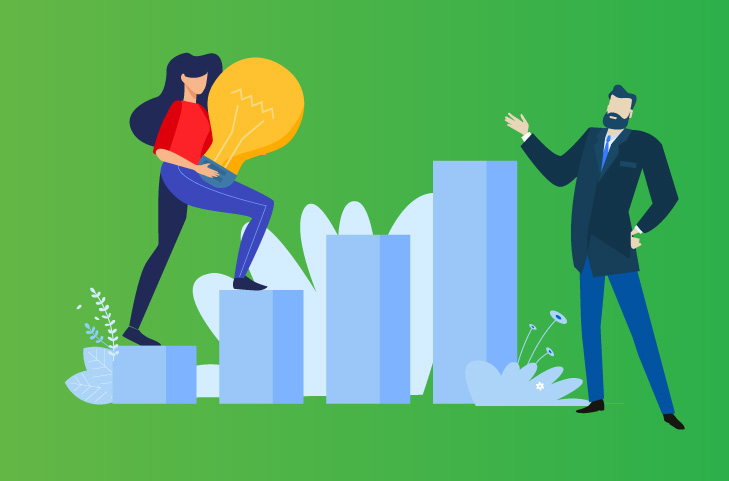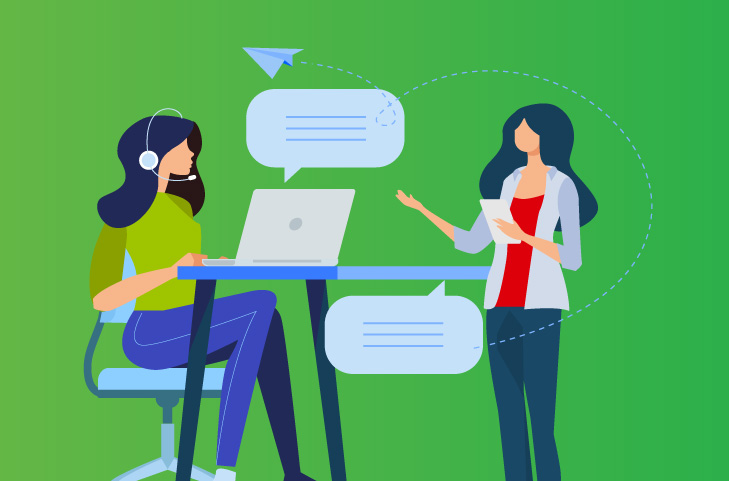If you’ve been in the B2B space for long enough, you know lead generation has changed dramatically since the onset of the pandemic. The sales pipeline has diminished noticeably, and so has the win rate, thanks to the delayed purchasing cycles during the pandemic. But that’s not all. The physical distancing regulations also pushed B2Bs to ditch the traditional in-person sales-focused approaches for lead generation and adopt a novel, remote-first approach complete with virtual events and demos, cold-calls social selling, etc., as well.
For perspective, over 80% B2B decision-makers relied solely on digital communication during this period.
While most companies have adapted to the changes in lead generation over the pandemic, thanks to technology, several new lead generation trends have emerged too. And it’s clear that leveraging them early can up your lead generation game.
Wondering what the five hottest lead generation trends are for the year 2022? Take a look for yourself.
1. Data Based Lead Generation
Increased web traffic may look like a successful lead generation measurement at first glance, but it is far from true. The reason? They don’t always account for random site visits or uninterested prospects. Since marketing qualified leads only include prospects who will go to the next stage of the marketing funnel, they make a much better measurement for successful lead generation. Add if you didn’t know already, B2Bs are adopting a data-first approach for lead generation now.
Here the B2Bs combine data collected from prospects with analytics to get quality leads. Typically, B2Bs collect prospect data from forms or other means to understand client concerns, problems, and their stage in the customer journey through analytics. Then they create buyer personas and develop marketing strategies for these buyer personas, such that a qualified prospect converts to an inbound lead. Such a data-centric approach is known to save company costs. And according to 37% of top executives, it helps make strategic decisions regarding lead generation and sales.
2. Hyper Personalization and Account-Based Marketing

A quality lead is one who is more likely to convert, and a personalized experience is known to drive this conversion. In fact, a personalized experience can boost engagement rates by over 57% and conversion by over 63%. But how does personalization help secure more qualified leads? The answer- a better customer experience. People want a more targeted and relevant experience while shopping for a product, and they will engage more if they believe a message is tailored to them.
Besides, they will also place greater trust if you give them a personalized experience and even show greater customer loyalty, something that can give you the edge over your competitors.
B2Bs (about 50% of them) are increasingly switching over to Account-Based Marketing (ABM) to provide hyper-personalized experiences. Here, B2Bs focus their marketing efforts on a few high-value accounts having similar concerns and motivations to boost customer experiences and generate more conversions.
3. Customer Data Platforms
B2Bs need accurate data to generate personalized experiences, and over 51% of B2Bs are using Customer Data Platforms (CDP) to help with it. A CDP collates information from different sources, including social media activity, website behavior, etc., cleanses them, and creates an anonymous customer profile. Marketers can now use such rounded information about their ideal prospects to better their lead generation process.
CDPs can go even further and filter customers according to parameters like demographics, location, etc. A CDP also allows customer profiles to be flexible and scalable. This helps marketers generate customer profiles based on dynamic customer requirements and helps in predictive analyses.
Besides, CDPs also collate data from different channels and integrate them around the customer. This way, they help marketers generate better omnichannel strategies and holistic customer experiences.
4. Automated Sales Cadence Tools

A sales cadence is an important part of successful lead nurturing. And it is now turning towards automation. In fact, B2Bs using sales acceleration software saw up to 30% increase in revenue growth in about 90 days! But how do automated sales cadence tools help achieve this feat?
Automation allows marketers to cut down on repetitive tasks such as data validation, track the progress of each prospect, send emails, schedule follow-ups, and more. This frees up time for more important tasks such as reaching out to more leads, personalization, and generating custom outreach messages. The best part? Automated sales cadence software allows you to track metrics of every cadence in real time.
This allows marketers to gain insights about how prospects are engaging with a cadence. It also helps them tweak strategies until they arrive at one that works.
5. Multimedia Thought Leadership
Over 89% B2B decision makers know the importance of thought leadership content in boosting brand image already. However, posting thought leadership content on LinkedIn isn’t going to cut it anymore. B2Bs must supplement traditional platforms for thought leadership content at LinkedIn and SlideShare and add more channels to the mix. These could include video-based thought leadership content on platforms like Facebook (Meta) and YouTube, or long-form podcasts on audio platforms like Spotify, as well.
Generating thought leadership content for different platforms helps boost organic reach. Besides, it also helps you repurpose your content and tailor them to different kinds of audiences. For instance, while you could post a video of an online webinar on YouTube, you could also repurpose it and generate a blogpost for LinkedIn, put the audio as a podcast episode, and generate a series of carousel-type posts for Instagram, and so on.
Final Word

Lead generation in a post-Covid world is heavily dependent on accurate and organized customer data and automation. What’s more, it focuses on meeting customer expectations and needs across all channels.
So B2Bs that survived the pandemic must upgrade their current lead generation strategies and invest in software to make lead generation simpler and more personalized for customers. After all, this is the only way they can ensure prospects turn to qualified leads and eventually into paying customers.


